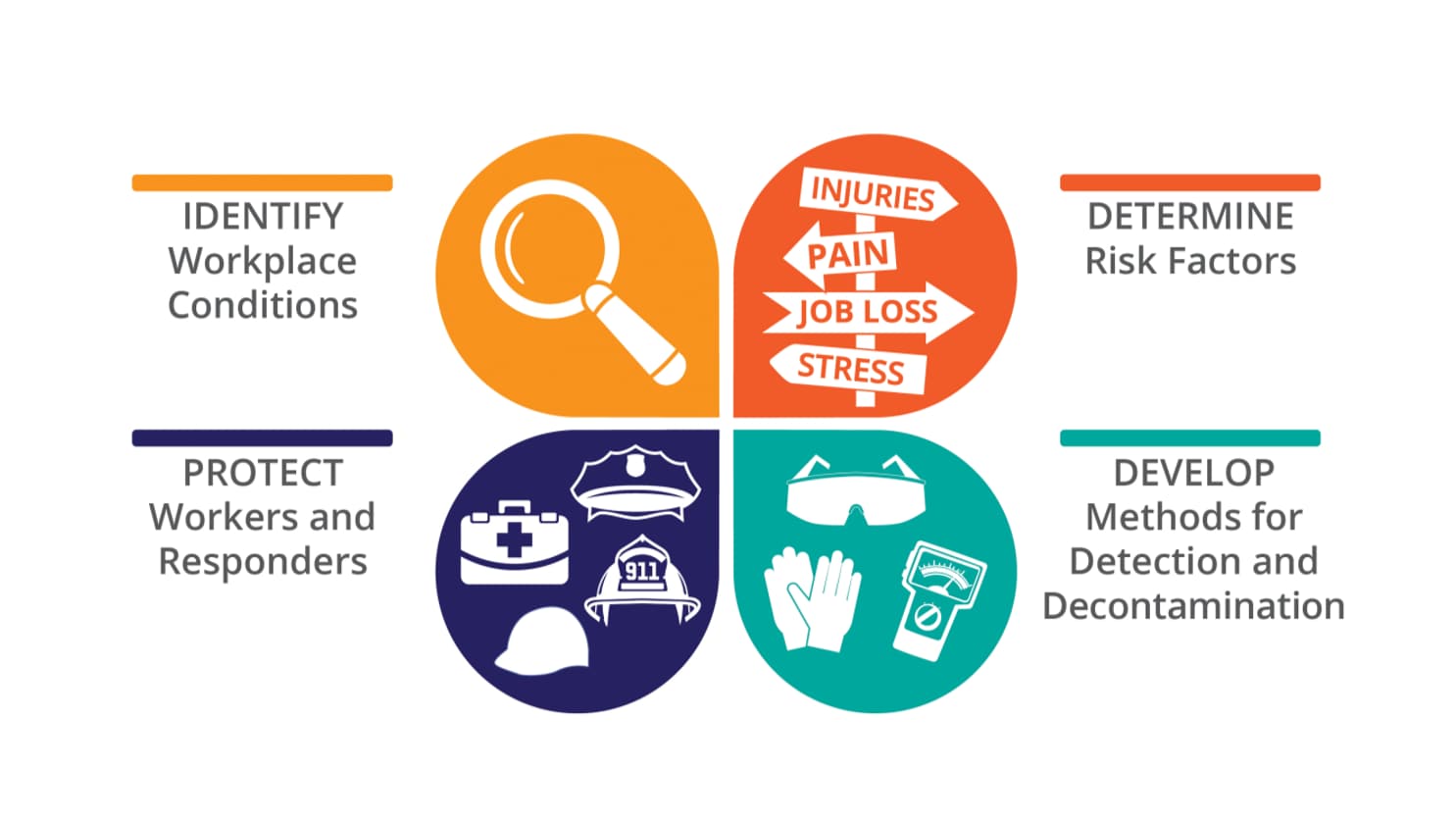Key points
- The effects of opioids are not isolated to work or home environments.
- Employers can prevent opioid misuse and opioid use disorder (OUD) through work policies and practices.
- NIOSH has prevention, treatment, and recovery resources for workers and employers.

Overview
The effects of opioids are not isolated to work or home environments. The potential for OUD may arise from injuries that happen at work. However, the consequences affect both an individual's working life and home life.
By using Total Worker Health® principles, NIOSH is developing solutions to help workers and employers facing this crisis in their communities. For example, our page on Workplace-Supported Recovery Programs can help employers design supportive policies.
Fast facts
In 2021, 106,699 drug overdose deaths occurred. This is an age-adjusted rate of 32.4 per 100,000 standard population in the United States. That is more than any other year on record.
A National Safety Council survey found that 75% of employers report that opioid use has impacted their workplace. However, only 17% report being extremely well-prepared to address the issue.
Approximately half of all respondents 18 years or older who reported misusing opioids had full- or part-time jobs in 2021.
How it works
Risk Factors for Opioid Misuse or OUD
- Work-related illnesses or injuries
- Chronic medical conditions
- Over-prescription in employee health services or health plans
- Over-prescription in workers' compensation medical care
Workplace Policies That Affect Workers
- Workforce education about risks of OUD
- Workplace drug testing
- Availability of medical-assisted treatment (MAT) for OUD
- Integration of opioid-affected workers back into the workplace
- Reasonable accommodation policy
- Return-to-work policy
NIOSH Framework
The NIOSH Framework considers many elements of opioid use:
- Precursors in the workplace.
- Detection and protection.
- Containment and decontamination.
- Strategic responses.
NIOSH researchers and practitioners can offer unique recommendations targeted at workers and employers facing this crisis together. Consider using policies, programs, and practices that address the conditions of work. This can protect workers and advance their health and well-being. Search for NIOSH and NIOSH-funded publications on this topic here.

Resources and tools
Using Naloxone to Reverse Opioid Overdose in the Workplace: Information for Employers and Workers
Medication-Assisted Treatment for Opioid Use Disorder
Drug Overdose Deaths at Work Infographics
Recovery-Ready Workplace Resource Hub
Prescription Opioid and Benzodiazepine Medications and Occupational Safety and Health
Initiatives to Prevent Opioid Misuse and Promote Recovery Friendly Workplace Programs (nih.gov)
